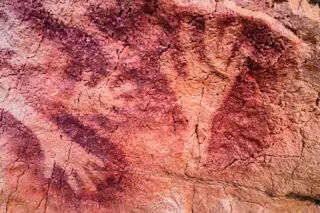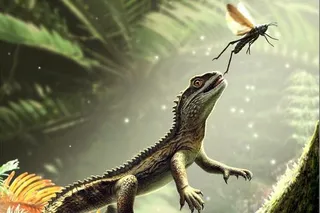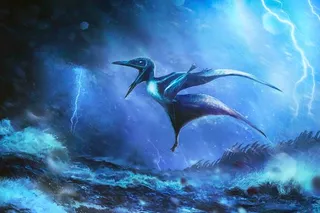When most people think of the Paleolithic era, they likely think of ancient hominins with spears chasing after wooly mammoths. Or they think of cave men numbly knocking rocks together, waiting for a spark.
But most people living during the Paleolithic era were actually children and adolescents. Archaeological discoveries of cave art, discarded tools, and burials are helping scientists gain a better understanding of what life was like for prehistoric children.
What Was the Paleolithic Era?
The Paleolithic era spans from 2.5 million years to 10,000 years ago, preceding the transition of Homo sapiens from nomadic hunter-gatherers to more settled farmers.
The Paleo era is divided into three time periods. The early Paleolithic era goes from 2.5 million to 1 million years ago. The middle ranges from 1 million to 40,000 years ago. And the late Paleolithic era spans from 40,000 to 10,000 years ago.
Homo sapiens weren’t the only hominins during the Paleolithic era; they were actually one of the later species to evolve. Homo erectus, for example, were in Africa and Asia between 1.89 million and 110,00 years ago. Homo neanderthalensis lived from 400,000 to 40,000 years ago in parts of Europe and Asia. And Homo sapiens evolved 300,000 years ago in Africa.
In prehistoric times, most Homo sapiens were actually children and teenagers. Between 40 and 65 percent of people living during the time were children or adolescents.
Read More: Prehistoric Human Populations Shifted East at the End of the Ice Age
Life in the Paleolithic Era
Without written records, scientists must rely on the archaeological record to understand what life was like during this prehistoric period. The discovery of cave art, tools, burials, and even fossilized footprints has helped scientists understand what it was like to grow up in the Paleolithic era.
“We see that kids were involved in every aspect of life,” says April Nowell, author of Growing Up in the Ice Age and a professor of anthropology at the University of Victoria.
When analyzing ancient cave art, for example, scientists have found children’s finger flutings deep in caves. Some of these cave crevices were low in oxygen, dark, and required children to crawl in at times.
In France, for example, scientists have found cave art at Grottes de Gargas dating back 27,000 years. The finger flutings appeared to have been made by four adults and three children.
Paleolithic Children at Play
Children’s footprints have also been found in places where butchering occurred or tools were made. Scientists have also found remnants of tools they believe were being used by children or adolescents to practice their tool-making skills, Nowell says.
Ice-age kids also found time for fun. At the Grotte de Niaux in France, for example, scientists uncovered 40 footprints more than 12,000 years old. Based on the positioning, researchers believe the tracks were made by children while playing a game.
“You can see evidence of them running around with other kids,” Nowell says. “We have evidence of them throwing mud balls and throwing them down in cave ceilings.
At Fontanet in Southern France, scientists found evidence of children throwing clay pellets dating back 13,000 years ago. Around the same time in a cave in Italy, someone — most likely kids or teens — hurled mud balls at the wall and tried to hit the stalactites hanging from the cave ceiling.
Dangers of Paleo Living
Life in the Paleolithic era was short and dangerous, and wild animals were a threat to Paleolithic people. Homo sapiens faced threats from predators like bears, cave lions, and mammoths. They were also subject to accidental injury, disease, or poisoning from eating a toxic plant.
Paleo burials help scientists understand how early humans responded to death. In France at the La Madeleine site, Nowell says archaeologists uncovered the remains of a child between the ages of three and seven. The child was buried in a garment embroidered with beads that scientists estimate would have taken about 20 hours to manufacture.
Burying the child in the garment, as opposed to passing it on to a living person, indicated the child was seen as a valuable member of its society.
“To me, that speaks to the kind of pain or grief the adults around them felt as they put this little one into the ground,” Nowell says.
Read More: Stone Age Humans Chose Their Rocks with Care
Article Sources
Our writers at Discovermagazine.com use peer-reviewed studies and high-quality sources for our articles, and our editors review for scientific accuracy and editorial standards. Review the sources used below for this article:
J-Stage. The Paleolithic Era: A crucial period in human ancient history
Smithsonian National Museum of Natural History. Human Evolution Interactive Timeline
MDPI. Child in Time: Children as Liminal Agents in Upper Paleolithic Decorated Caves
April Nowell. Growing Up in the Ice Age: Fossil and Archaeological Evidence of the Lived


